-
 Bitcoin
Bitcoin $117700
-1.00% -
 Ethereum
Ethereum $4458
-3.91% -
 XRP
XRP $3.119
0.14% -
 Tether USDt
Tether USDt $1.001
-0.02% -
 BNB
BNB $836.6
-1.56% -
 Solana
Solana $189.5
-3.90% -
 USDC
USDC $0.9998
-0.02% -
 Dogecoin
Dogecoin $0.2335
1.29% -
 Cardano
Cardano $0.9642
1.51% -
 TRON
TRON $0.3539
-1.19% -
 Hyperliquid
Hyperliquid $47.41
-1.84% -
 Chainlink
Chainlink $21.92
-3.28% -
 Stellar
Stellar $0.4286
-0.23% -
 Sui
Sui $3.724
-3.29% -
 Bitcoin Cash
Bitcoin Cash $594.8
-0.78% -
 Ethena USDe
Ethena USDe $1.001
0.04% -
 Hedera
Hedera $0.2501
-2.06% -
 Avalanche
Avalanche $23.96
-4.87% -
 Litecoin
Litecoin $119.0
-2.32% -
 Toncoin
Toncoin $3.473
0.82% -
 UNUS SED LEO
UNUS SED LEO $9.596
0.17% -
 Shiba Inu
Shiba Inu $0.00001301
-0.39% -
 Uniswap
Uniswap $11.03
-0.25% -
 Polkadot
Polkadot $3.935
-2.62% -
 Dai
Dai $1.000
0.01% -
 Bitget Token
Bitget Token $4.564
-1.76% -
 Cronos
Cronos $0.1512
-4.11% -
 Ethena
Ethena $0.7306
-1.09% -
 Pepe
Pepe $0.00001087
-2.68% -
 Aave
Aave $300.2
-4.00%
Why does token economics need tokenization? Asset chain and economic model innovation
Tokenization in token economics enhances liquidity, enables fractional ownership, and fosters innovative economic models, revolutionizing asset management on blockchains.
May 15, 2025 at 10:36 pm
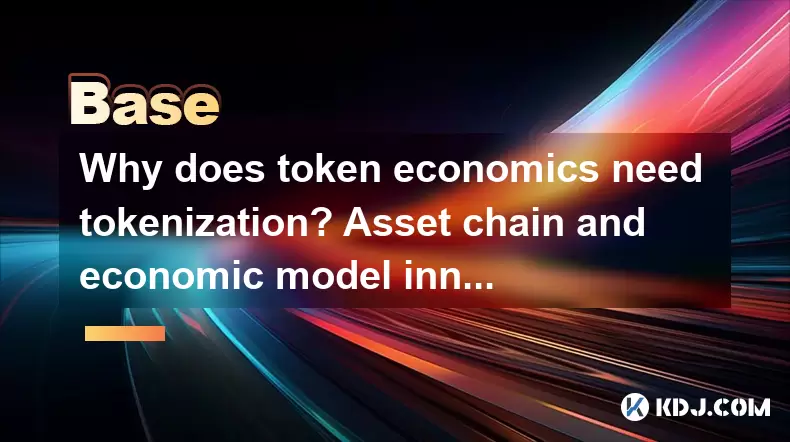
Token economics, or tokenomics, is a critical aspect of cryptocurrency and blockchain projects. It involves the design and implementation of economic systems within a blockchain network, focusing on how tokens are created, distributed, and used. Tokenization is a fundamental process in token economics, and it plays a pivotal role in asset chain and economic model innovation. This article explores why token economics necessitates tokenization and how it contributes to the innovation of asset chains and economic models.
The Role of Tokenization in Token Economics
Tokenization is the process of converting rights to an asset into a digital token on a blockchain. This process is essential in token economics because it allows for the representation of various assets in a digital form, making them easily transferable and divisible. Tokenization enables the creation of new economic models by allowing assets to be broken down into smaller units, which can be traded or used in innovative ways.
In the context of token economics, tokenization serves several key functions. It facilitates the creation of liquidity for assets that were previously illiquid, such as real estate or art. By tokenizing these assets, they can be traded on blockchain-based platforms, increasing their accessibility to a broader audience. Additionally, tokenization allows for the implementation of smart contracts, which can automate many aspects of token management and distribution, enhancing efficiency and reducing the need for intermediaries.
Tokenization and Asset Chain Innovation
An asset chain is a blockchain network that focuses on the tokenization and management of assets. Tokenization is crucial for the development of asset chains because it allows for the seamless integration of various types of assets onto the blockchain. This integration enables the creation of more flexible and efficient asset management systems.
By tokenizing assets, asset chains can offer fractional ownership, allowing investors to own a portion of an asset without needing to purchase it in its entirety. This democratizes access to investment opportunities and can lead to the development of new investment models. Furthermore, tokenization enables cross-chain interoperability, allowing assets to be transferred between different blockchain networks, which can enhance the overall utility and value of the asset chain.
Economic Model Innovation Through Tokenization
Tokenization plays a significant role in the innovation of economic models within the cryptocurrency space. By tokenizing assets, new economic models can be developed that are more inclusive and efficient. For example, tokenization can enable the creation of decentralized finance (DeFi) platforms, where users can lend, borrow, and trade tokenized assets without the need for traditional financial intermediaries.
Another area of innovation is the development of token-based incentives. By tokenizing rewards and incentives, projects can encourage participation and engagement within their ecosystems. This can lead to the creation of more robust and active communities, which are essential for the long-term success of any blockchain project.
Enhancing Liquidity and Accessibility
One of the primary benefits of tokenization in token economics is the enhancement of liquidity and accessibility. By converting assets into tokens, they can be traded on decentralized exchanges and other blockchain-based platforms. This increases the liquidity of the assets, making it easier for investors to buy and sell them.
Moreover, tokenization can expand access to investment opportunities. By breaking down assets into smaller, more affordable units, tokenization allows a wider range of investors to participate in markets that were previously inaccessible to them. This can lead to a more diverse and inclusive investment landscape.
Tokenization and Regulatory Compliance
Tokenization also plays a crucial role in ensuring regulatory compliance within the cryptocurrency space. By tokenizing assets, projects can implement smart contracts that automatically enforce compliance with relevant regulations. This can help to mitigate the risk of regulatory issues and enhance the credibility of the project.
For example, tokenization can be used to implement Know Your Customer (KYC) and Anti-Money Laundering (AML) procedures. By embedding these compliance measures into the tokenization process, projects can ensure that only verified users can participate in their ecosystems, reducing the risk of fraud and illegal activities.
Tokenization and the Evolution of Token Economics
Tokenization is not static; it evolves alongside the broader field of token economics. As new technologies and methodologies emerge, tokenization continues to play a central role in the evolution of token economics. For instance, the development of non-fungible tokens (NFTs) has introduced new possibilities for tokenizing unique digital assets, such as art and collectibles.
Furthermore, the integration of tokenization with other emerging technologies, such as artificial intelligence and machine learning, can lead to more sophisticated and dynamic economic models. These technologies can be used to optimize token distribution, enhance the efficiency of smart contracts, and improve the overall functionality of tokenized systems.
Frequently Asked Questions
Q: How does tokenization affect the security of assets on a blockchain?
A: Tokenization can enhance the security of assets by leveraging the inherent security features of blockchain technology, such as encryption and decentralization. However, it also introduces new security considerations, such as the need to protect private keys and ensure the integrity of smart contracts. Proper implementation and ongoing security measures are essential to mitigate these risks.
Q: Can tokenization be applied to any type of asset?
A: In theory, tokenization can be applied to any type of asset, provided there is a clear legal framework and technological infrastructure to support it. However, the feasibility and practicality of tokenizing certain assets may vary depending on factors such as regulatory compliance, market demand, and the complexity of the asset itself.
Q: How do tokenized assets differ from traditional assets in terms of ownership and transfer?
A: Tokenized assets are represented digitally on a blockchain, which allows for more flexible and efficient ownership and transfer mechanisms compared to traditional assets. Ownership of tokenized assets is recorded on the blockchain, and transfers can be executed instantly and without intermediaries, often through smart contracts. This contrasts with traditional assets, which may require more cumbersome and time-consuming processes for ownership and transfer.
Q: What role do regulatory bodies play in the tokenization of assets?
A: Regulatory bodies play a crucial role in the tokenization of assets by establishing guidelines and frameworks to ensure compliance with existing laws and regulations. They monitor and oversee the tokenization process to prevent fraud, protect investors, and maintain the integrity of financial markets. Collaboration between blockchain projects and regulatory bodies is essential to ensure that tokenized assets are developed and managed responsibly.
Disclaimer:info@kdj.com
The information provided is not trading advice. kdj.com does not assume any responsibility for any investments made based on the information provided in this article. Cryptocurrencies are highly volatile and it is highly recommended that you invest with caution after thorough research!
If you believe that the content used on this website infringes your copyright, please contact us immediately (info@kdj.com) and we will delete it promptly.
- Kazakhstan's Crypto Leap: Bitcoin ETF and Central Asia's Digital Finance Future
- 2025-08-13 12:45:19
- BlockDAG Presale Blazes Past $371M: Fundraising Frenzy Fuels Crypto Sensation
- 2025-08-13 13:05:21
- Meme Coins: Chasing the 2025 Surge – Which Will Moonshot?
- 2025-08-13 10:25:23
- Bitcoin's Wild Ride: Rally, Pullback, and What's Next
- 2025-08-13 10:25:23
- Bitcoin, Bitmax, and Institutional Demand: A New Era of Crypto Investment
- 2025-08-13 10:45:12
- Solana, ROAM, and Airdrops: What's the Buzz in 2025?
- 2025-08-13 11:35:13
Related knowledge
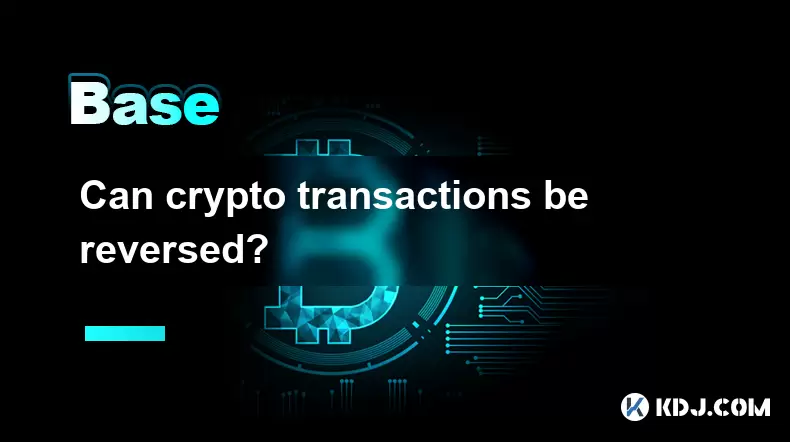
Can crypto transactions be reversed?
Aug 10,2025 at 01:35am
Understanding the Immutability of Blockchain TransactionsCryptocurrency transactions are built on blockchain technology, which is designed to be immut...
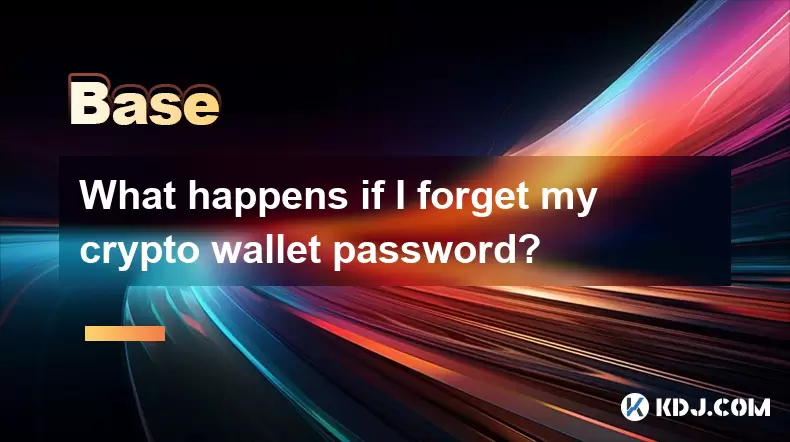
What happens if I forget my crypto wallet password?
Aug 09,2025 at 08:50am
Understanding the Role of a Crypto Wallet PasswordA crypto wallet password serves as a critical security layer that protects access to your digital as...
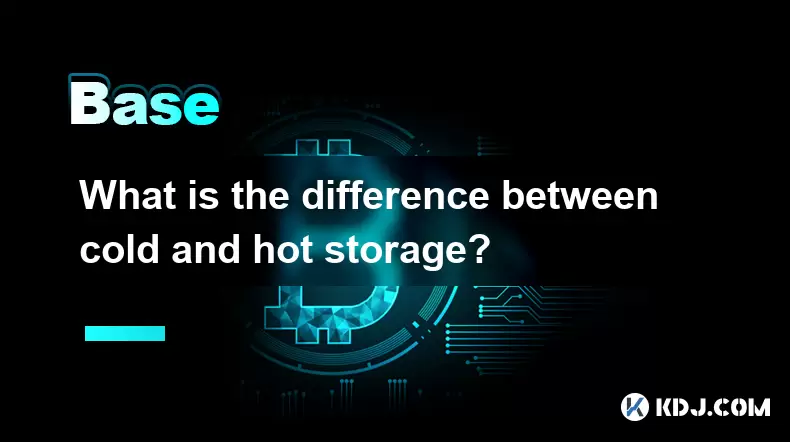
What is the difference between cold and hot storage?
Aug 12,2025 at 01:01am
Understanding Cold Storage in CryptocurrencyCold storage refers to offline methods of storing cryptocurrency private keys, ensuring they are not expos...
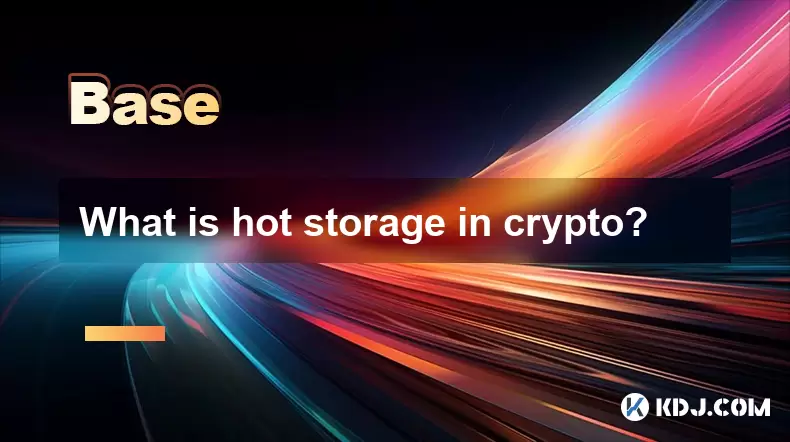
What is hot storage in crypto?
Aug 11,2025 at 07:08am
Understanding Hot Storage in CryptocurrencyHot storage refers to cryptocurrency wallets that are connected to the internet. Unlike cold storage soluti...

What is cold storage in crypto?
Aug 13,2025 at 11:35am
Understanding Cold Storage in CryptocurrencyCold storage in cryptocurrency refers to a method of storing digital assets offline, away from internet-co...
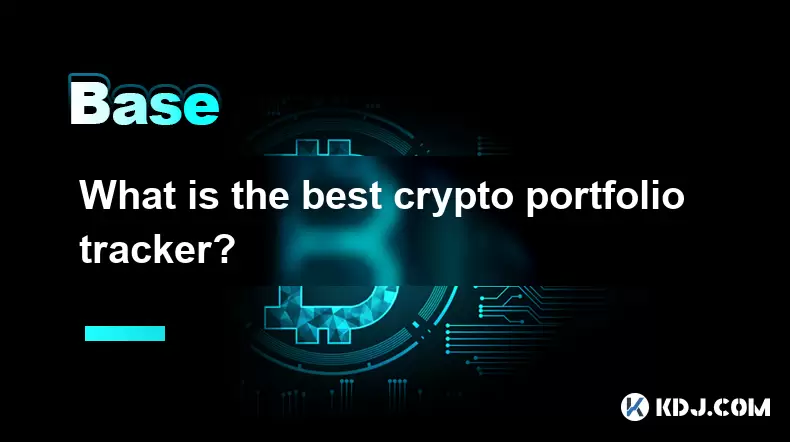
What is the best crypto portfolio tracker?
Aug 10,2025 at 05:08am
Understanding the Role of a Crypto Portfolio TrackerA crypto portfolio tracker is a digital tool designed to help investors monitor the performance of...

Can crypto transactions be reversed?
Aug 10,2025 at 01:35am
Understanding the Immutability of Blockchain TransactionsCryptocurrency transactions are built on blockchain technology, which is designed to be immut...

What happens if I forget my crypto wallet password?
Aug 09,2025 at 08:50am
Understanding the Role of a Crypto Wallet PasswordA crypto wallet password serves as a critical security layer that protects access to your digital as...

What is the difference between cold and hot storage?
Aug 12,2025 at 01:01am
Understanding Cold Storage in CryptocurrencyCold storage refers to offline methods of storing cryptocurrency private keys, ensuring they are not expos...

What is hot storage in crypto?
Aug 11,2025 at 07:08am
Understanding Hot Storage in CryptocurrencyHot storage refers to cryptocurrency wallets that are connected to the internet. Unlike cold storage soluti...

What is cold storage in crypto?
Aug 13,2025 at 11:35am
Understanding Cold Storage in CryptocurrencyCold storage in cryptocurrency refers to a method of storing digital assets offline, away from internet-co...

What is the best crypto portfolio tracker?
Aug 10,2025 at 05:08am
Understanding the Role of a Crypto Portfolio TrackerA crypto portfolio tracker is a digital tool designed to help investors monitor the performance of...
See all articles

























































































